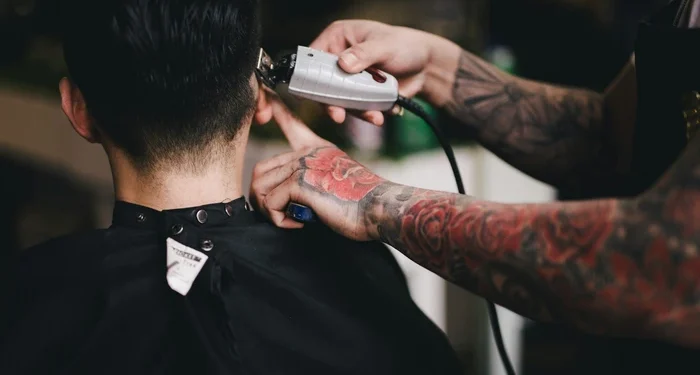Opening a specialist curl salon in London requires careful planning, the right location and a deep understanding of both regulatory obligations and local customer preferences. From identifying underserved neighbourhoods to recruiting top stylists, securing financing and navigating City Council requirements, this guide covers every step. Below you’ll find a handy table of contents to navigate the key stages—location scouting, investment, legal formalities, recruitment, service mix and launch tips—so you can bring your curl‑centric vision to life.
1. Spotting Underserved Areas
London hosts more than 10,675 beauty and hair salons across the UK, with the capital accounting for a significant share. Despite dense clusters in Westminster, Camden and Islington, several outer boroughs remain oversubscribed by general salons yet lack curly‑specialist studios. Industry insiders point to markets such as Havering, Bromley and parts of Southwark as having room for growth, offering lower rents and an eager customer base that travels less frequently into central zones citeturn0search3turn0search7. Undertake footfall studies and competitor audits in South East London high streets: if you see few curl‑focused offerings, you’ve found your niche.
2. Estimating Start‑Up Costs and Securing Finance
A lean curl salon can launch on a modest budget of around £15,000, though most founders invest between £25,000 and £50,000 for fit‑out, equipment and initial working capital. Key outlays include:
- Lease deposit and three months’ rent: prime parade locations command £2,000–£5,000 per month.
- Salon fit‑out: styling chairs, wash stations and hydraulic basins cost £4,000–£10,000.
- Equipment and products: professional curling irons, diffusers, high‑performance hair care lines and retail stock, roughly £3,000–£7,000.
- Software and booking system: cloud‑based salon management from £20 per month.
- Marketing and signage: branding, website and initial social campaigns, £1,500–£3,000.
Most high‑street banks—such as NatWest, HSBC and Santander—offer small‑business loans to hair and beauty start‑ups, requiring a robust business plan, three‑year financial projections and evidence of industry experience. Consider also peer‑to‑peer platforms or partnering with an angel investor who understands the beauty sector.
Read Also: The Cost of Running a Barbershop
3. Legal and Regulatory Requirements
Before swinging open your doors, register your premises as a hairdressing business with your local council. In the City of London, this takes the form of a Hairdresser Registration under the Greater London Council (General Powers) Act 1967; applications involve a short form and a £50 fee. If you plan to offer chemical services—relaxers, perms or dyes—you must also comply with COSHH (Control of Substances Hazardous to Health) regulations, ensuring safe storage and disposal of chemicals.
Other mandatory items include:
- Public liability insurance: minimum £2 million cover to protect against customer injuries.
- Employer’s liability insurance: required as soon as you take on staff.
- Music licence: if you play copyrighted music in the salon.
- Health and safety poster: display guidelines for workplace safety.
Plan at least eight weeks for council evaluations and inspections to avoid launch delays.
4. Recruiting Top Curl Specialists
Finding stylists who excel with curly and textured hair can be challenging, particularly given a national apprenticeship decline of 70 per cent among Generation Z hairdressers. Best practice tips:
- Leverage industry networks: advertise roles via the British Hairdressing Journal and at trade shows such as Salon International.
- Showcase development paths: emphasise skills for cv growth—advanced curl‑cutting workshops, in‑salon masterclasses and opportunities to spearhead product launches.
- Offer competitive packages: blend base salary with commission, and consider retention bonuses for stylists who hit revenue targets.
- Host open‑studio days: invite freelance curl experts to work a lunch‑hour pop‑up; if the chemistry clicks, extend formal offers.
Recruitment often takes three to six months; begin outreach at least four months before opening and negotiate notice periods with existing employers.
5. Tailoring Services by Neighbourhood
Customer preferences vary markedly across London. In affluent west‑end districts (e.g., Chelsea, Kensington), premium “curation cuts” and bespoke treatments—such as Olaplex‑infused styling or silk‑press sessions—command higher fees (£80–£120 per service). South and east‑end locales (e.g., Lewisham, Newham) respond well to express treatments—blow‑outs, root‑refreshes and wash‑and‑go styling at £30–£45. In vibrant multicultural areas like Peckham or Brixton, extended services for Afro‑Caribbean curl types, including protective styles and braiding, prove especially popular. Conduct local surveys and tailor your menu to match spending power and cultural hair traditions.
6. Designing an Inviting Salon Space
The ambience of a curl salon should feel warm, inclusive and Instagram‑worthy. Essentials include:
- Open‑plan layout: salon chairs that face each other foster community and encourage peer recommendations.
- Dedicated wash stations: reclining basins with headrests to maximise comfort during longer treatments.
- Retail corner: showcase hero products under spotlights; 20 per cent of total revenue often comes from retail sales.
- Digital displays: loop tutorial videos (e.g., “DIY night‑time curl refresher”) to upsell add‑ons.
- Relaxation area: plush seating with magazines and refreshments where clients can preview new styles.
Accessibility is also crucial: ensure step‑free entry, wide aisles and at least one height‑adjustable chair for clients with mobility needs.
7. Marketing and Launch Strategies
A pre‑launch campaign should begin eight weeks before opening:
- Social‑media teasers: reveal “behind the scenes” fit‑out photos and stylist spotlights.
- Local partnerships: collaborate with nearby gyms or wellness studios to offer mutual discounts.
- Soft‑launch events: host an invitation‑only evening for influencers, local journalists and community leaders.
- Introductory offers: a “first‑visit curl consultation” at 20 per cent off to build word of mouth.
Deploy Google Ads targeted by postcode to reach local curl‑care seekers, and encourage early clients to leave Yelp or Google Business reviews.
Visit: Top Inspiring Entrepreneurs in the Hairstyling Industry
8. Ongoing Management and Growth
Once open, monitor key performance indicators: average revenue per client, retail‑to‑service sales ratio and chair utilisation rates. Hold monthly team meetings to review targets and gather stylist feedback. Expand services over time—introduce a colour bar for highlights or launch a membership plan with priority booking.
Consider a second location or pop‑up corners in department stores once you’ve established a minimum 75 per cent seat occupancy for six consecutive months.
Opening a curl salon in London in 2025 demands a blend of strategic location choice, solid financing, strict compliance and top‑tier talent. By focusing on underserved neighbourhoods, crafting a bespoke service menu and investing in both people and place, you’ll create a thriving business that meets London’s growing appetite for expert curl care. Good luck on your journey to becoming the city’s go‑to curl specialists.











